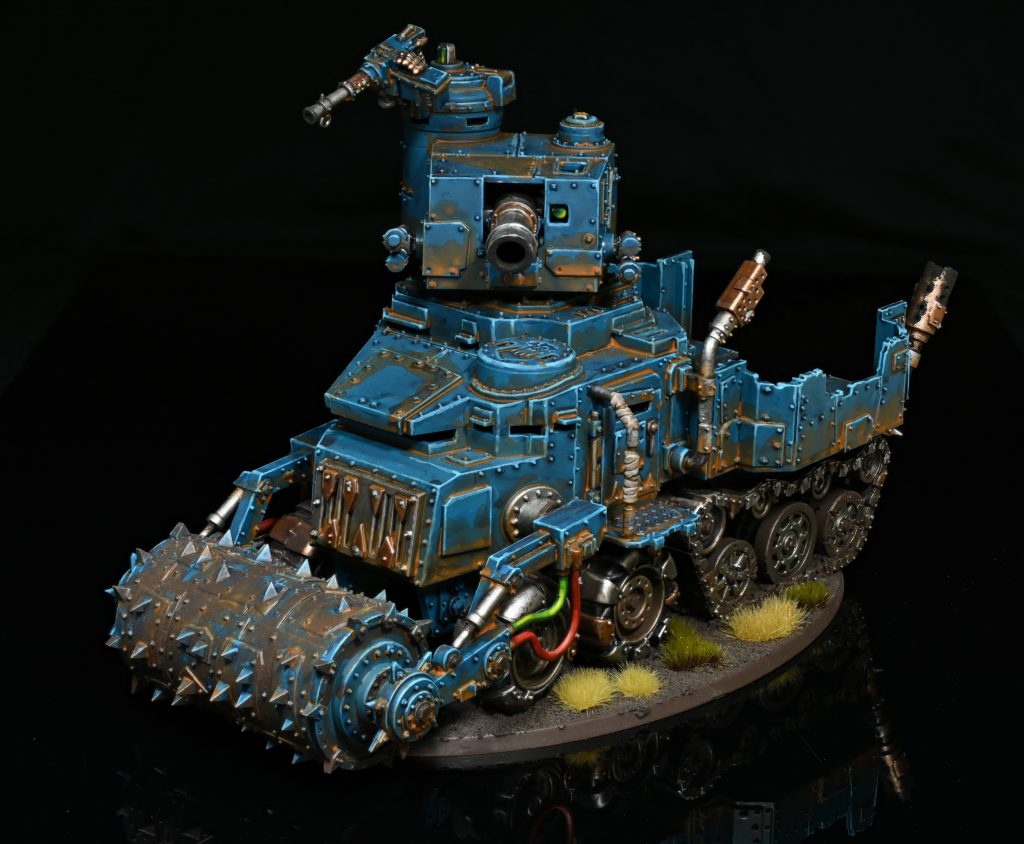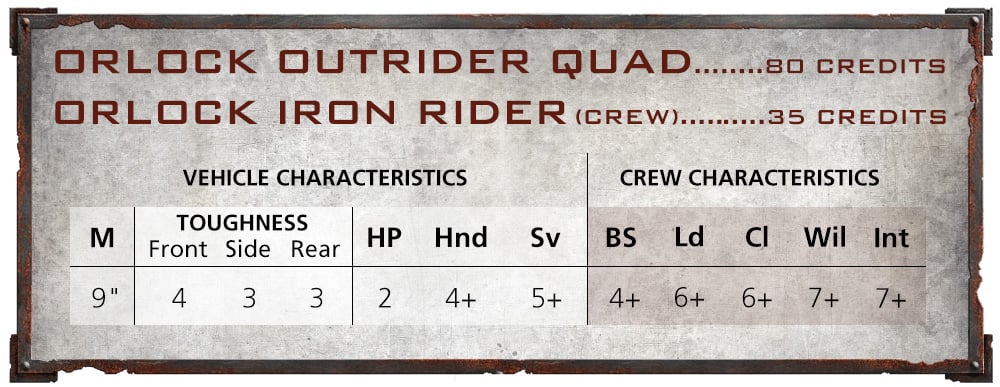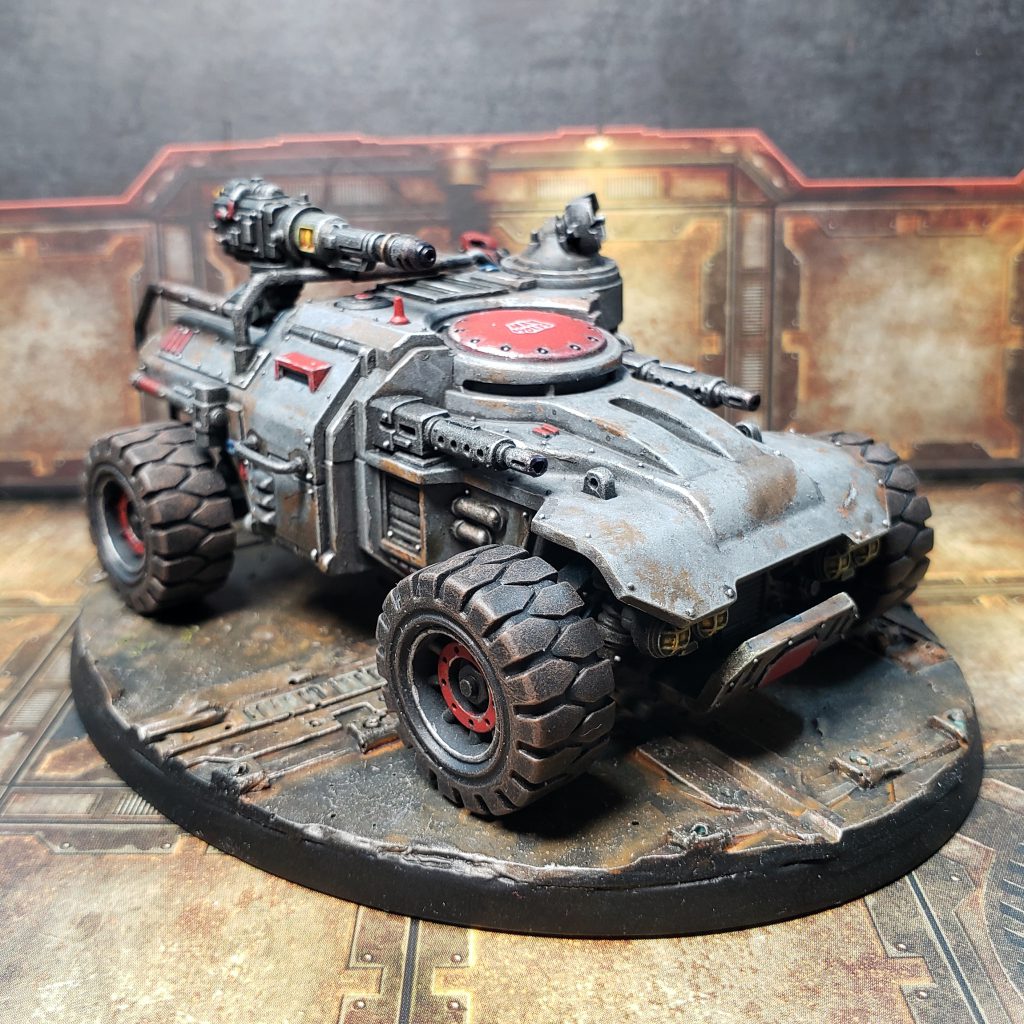This week’s Hammer of Math follows up on our Ash Wastes review to take a deep dive at the effects of the new vehicle rules.
Veteran (old) skirmish fans of Games Workshop may fondly remember Gorkamorka, a game where bands of ork warriors battle across the blasted wasteland of a derelict planet. Featuring the nostalgic combination of vehicles and wacky rules, it remains second only to Battlefleet Gothic in terms of games that I personally wish GW would resurrect. Fortunately the newest Ash Wastes supplement is the next best thing, and we here at Goonhammer are very much fans. While the bulk of the Ash Wastes rules are simply updates from previous editions (and are also available in the latest FAQ update), there is now an entire vehicle section for those who want to head out of the hive in style. Several vehicles are already available or soon will be. We already know of the quad bikes and Cargo-8 hauler, and the rulebook has a stat line for something called an “Ash Rig” which sounds like the War Rig straight out of Mad Max.

Within the context of the game, vehicles operate in a manner that’s similar to gangers with a few changes to movement and damage. They have actions just like any other model, and when attacking them you must hit, wound, and they must fail the save for the damage to be applied. Wounding them is slightly different courtesy of different Toughness characteristics depending on what part of the model faces the attacker, but where things really differ is in what happens after the save is failed.

Damaging a Vehicle
Every time a vehicle is wounded (regardless of how many hull points, or HP they have), the attacker player rolls one or more Location dice (typically one) along with a number of Damage dice equal to the Damage inflicted by the attack. Unless the rules state otherwise, the attacking player chooses one of the dice and applies the resulting damage to the specified location. This is the opposite of how Injury dice work against non-vehicle models. Injury dice are only rolled after the target is reduced to 0 wounds, while Damage dice are rolled every time the target is wounded. Every Injury dice result is applied to the model, while only one Damage dice result is applied. The consequence of this is that the degradation of a vehicle is more gradual as damage effects are applied.
There are four possible targets on a Location dice. 50% of the time the Body will be hit, while the Engine, Crew, and Drive will each have about a 17% chance. There are three possible results on the Damage dice. A glancing hit will occur 50% of the time, a penetrating hit will occur 33% of the time, and a catastrophic hit has a 17% chance. The chart below shows the probabilities of each combination of location and damage assuming that the most damaging option is always selected when multiple Damage dice are rolled.

Damage Results
Where things get interesting is what happens when you consider the consequences of each particular location. For example Hull Points are not lost when a vehicle takes a wound; they only occur when a location other than the Crew takes a Penetrating (1 HP lost) or Catastrophic (2 HP lost) hit. Several other combinations force the player to make a Handling check to avoid their vehicle becoming Stationary & Stalled (which requires a Simple action and a successful Handling check to get out of), or may force a Loss of Control test. Handling checks require the player to roll a 2d6 and achieve a result equal to or greater than the Handling characteristic of the vehicle. On something like a Quad it’s fairly easy with a target number of 4+, but the rules also provide the stats of a T8 “Ash Rig” which has 3 HP and a Handling characteristic of 6+.
- The probability of a given attack reducing the target by at least one Hull Point is 42% for 1 Damage dice, 63% for 2 Damage dice, and 73% for 3 Damage dice.
- The probability that the attack will force a Handling test to avoid a Stationary & Stalled condition (or guarantee the condition) is 53%, 44%, and 38% for 1, 2, and 3 Damage dice respectively. This is because as the hits become more damaging the model is generally forced to make Loss of Control tests instead.
- The probability that an attack will force a Loss of Control test is 36%, 50%, and 59% for 1, 2, and 3 Damage dice respectively.
- The probability that a attack will cause a Catastrophic Hit on the Crew that causes the driver to black out and automatically fail a Loss of Control test that ends up with the Control dice landing on a Roll which makes the vehicle Wrecked is 0.5% (1 in 216) for 1 Damage dice, 0.8% (1 in 118) for 2 Damage dice, and 1.2% (1 in 85) for 3 Damage dice.

Wrapping Up
Taking the battles out of the Hive City and into the toxic hellscapes between them is going to make for a very different experience, and a key part of that will be how vehicles play out. Fortunately for us the rules provided in the new box set look extremely fun. I’m particularly interested to see how the rules are applied to faction specific vehicles (my Murder Hornets definitely need a floating war rig) and how often those vehicles end up flipping over and exploding courtesy of a headshot from an autogun.
Thanks for reading! If you have any questions or comments feel free to drop us a note in the Comments below or email us at contact@goonhammer.com. That’s also the best way to suggest topics for future articles.


